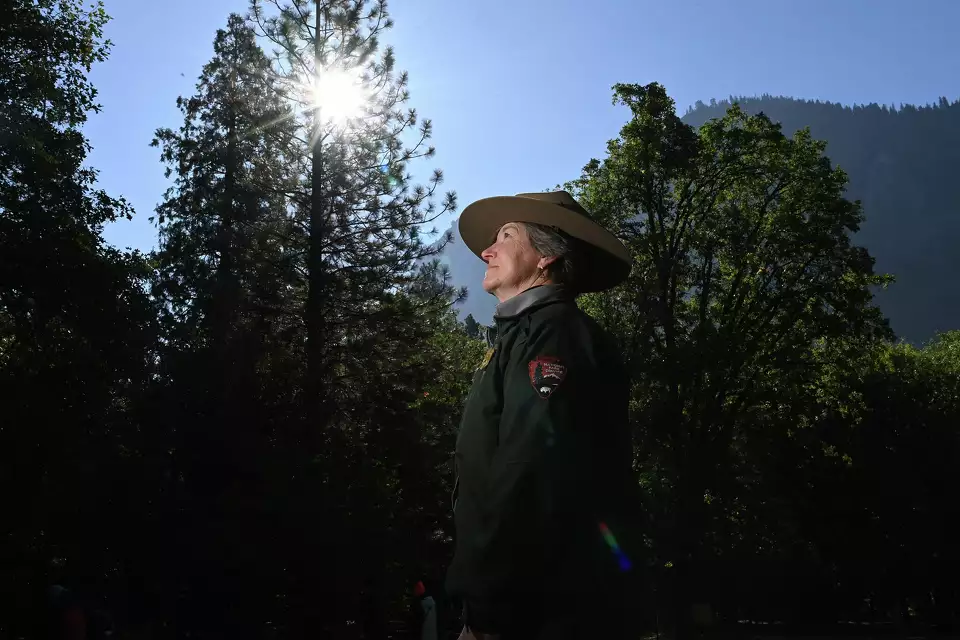Late last week, Elon Musk’s Department of Government Efficiency (DOGE) effectively took control of the U.S. Department of the Interior, which oversees essential agencies such as the National Park Service, the Bureau of Land Management, and the Bureau of Indian Affairs. The Interior Department is tasked with managing 400 national parks and historic sites, upholding treaties with over 500 Native American tribes, and overseeing more than 500 million acres of public land and wildlife conservation efforts.
Interior Secretary Doug Burgum signed a secretarial order on Thursday night that granted DOGE operative Tyler Hassen sweeping authority over the Interior Department. Hassen, the assistant secretary of policy, management, and budget for DOGE, is now empowered to make key funding decisions, enact policies, oversee programs, transfer funds, and even fire employees. Hassen, a former oil executive with Basin Energy, joined the Trump administration prior to his current role.

This order confers significant power on Hassen, bypassing Interior Secretary Burgum entirely. Hassen is not required to report to Burgum, nor does Burgum have veto power over Hassen’s decisions, including the potential dismissal of thousands of public lands managers or park rangers. According to the Washington Post, Hassen is also reviewing all grants and contracts exceeding $50,000.
The move raises legal concerns, as DOGE is not a formal government department established by Congress, leaving ambiguity over whether an agency leader can legally delegate such authority to it.
Jennifer Rokala, executive director of the Center for Western Priorities, a conservation advocacy group, criticized the order, calling it a stark example of leaders abandoning their responsibilities and allowing unqualified outsiders to make major decisions about the nation’s public lands. “This order shows what it looks like when leaders abdicate their jobs and let unqualified outsiders fire thousands of civil servants who are working on behalf of all Americans and their public lands,” Rokala stated.
Efforts to consolidate and restructure the National Park Service (NPS) have been ongoing for months, resulting in significant disruptions. Key leadership positions within the NPS have remained vacant, with as many as 100 superintendent roles unfilled. These vacancies, as reported by Kati Schmidt of the National Parks Conservation Association, are partly due to a combination of a hiring freeze, resignations, early retirements, voluntary buyouts, and dismissals. The early retirement offer deadline passed on April 18, contributing to a loss of experienced personnel.
Superintendents manage the operations, resources, and staff within national parks and monuments, and their departure has left a void in leadership, complicating the NPS’s ability to maintain its core responsibilities. Former Yosemite National Park Superintendent Cicely Muldoon, for instance, resigned prior to President Trump’s inauguration, and her position remains vacant with no clear replacement.
Compounding the issue, President Trump recently extended a hiring freeze through July 15, which prevents the filling of any vacant federal civilian positions, exacerbating the leadership shortage within the NPS. This freeze also prevents the creation of new positions unless specifically authorized.
Former superintendents like Jeff Mow, who led Glacier National Park from 2013 to 2022, highlighted the long-term impact of these vacancies, noting that the loss of superintendents not only affects park operations but also erodes relationships with local communities, businesses, and stakeholders. Mow emphasized that the trust built by superintendents over time is difficult to replace.
The challenges at the NPS are part of a larger trend of staffing issues under the Trump administration. In addition to the vacancy of top positions, the National Parks Conservation Association estimates that around 2,500 employees have resigned or taken buyouts. This follows the firing of approximately 1,000 employees on Valentine’s Day, some of whom have been reinstated, at least temporarily.
The loss of leadership, along with the continued impact of staffing shortages, poses serious concerns for the future of the National Park Service and the management of America’s public lands.

